Shakespeare’s Birthplace Pt 2

Beez Neez now Chy Whella
Big Bear and Pepe Millard
Fri 29 Jun 2018 22:27
|
Shakespeare’s Birthplace – a House, Museum and Garden
Entertainment – Part Two  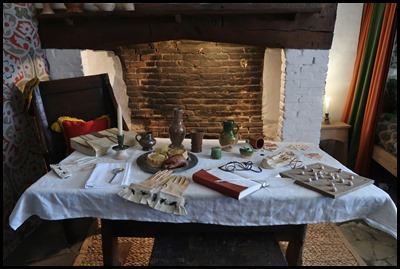 We stepped into Birthplace House and were
welcomed by a lady in a costume of the period who gave us an introduction. To
the left was this fireplace, to the right an old
settle, above which, were pictures and a history of the building (we saw more
throughout the house but have put them altogether in the Birthplace, House
History blog). In the next room – the parlour, to the left a
laid table, to the right a bed and beyond, a door to the
hall. 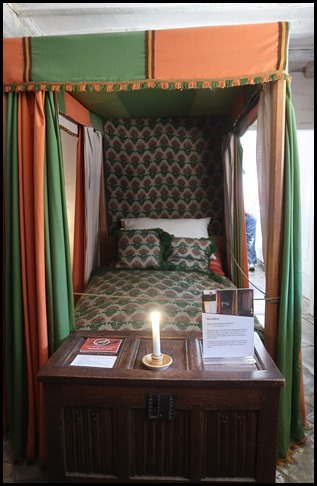 The
Parlour. ‘They sit conferring by the parlour fire’
The Taming of the Shrew 5.2.107. The parlour was a cosy space for the
Shakespeare family to gather and talk in the evenings, and entertain any
visitors. It would have been the grandest room in the house in order to show off
the family’s social status and hospitality to their
guests. The family’s ‘best
bed’, the most valuable item of furniture in the house, was displayed in
this room. It could be used as an occasional guest bed, or simply present a show
of wealth.  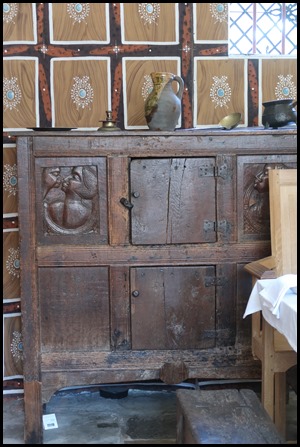 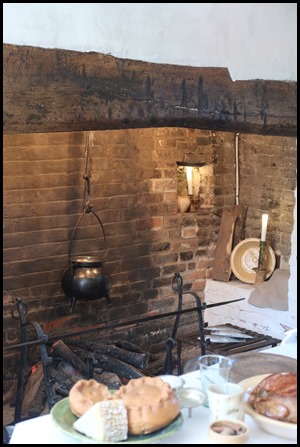 The Hall.
“Sit down and feed, and welcome to our table”. As You Like It 2.7.105.
The Shakespeare family would have enjoyed their main meal here in the hall,
around 11am. WIlliam attended school from 6am and travelled home for
lunch. In Tudor England, detailed ‘sumptuary
laws’ dictated what clothes could be worn and how food should be consumed for
each social class. The middle classes, including the Shakespeares, were
permitted two courses for the main meal, each consisting of several shared
dishes. The meal would include bread, pies,
pottage, fish and meat – although Fridays, Saturdays and Wednesdays were
classified as ‘fasting’ or ‘fish’ days where eating meat was
prohibited. 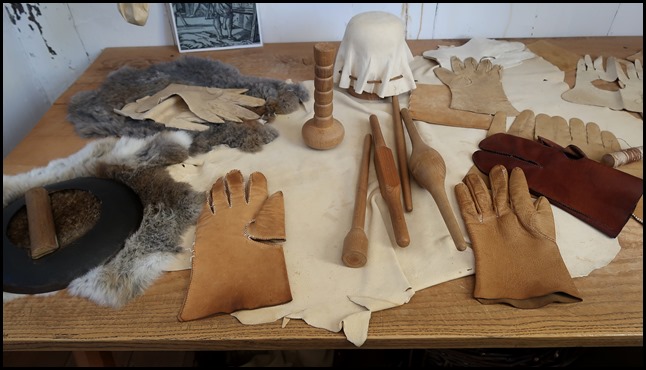 The
next room to the hall was The Glover’s Workshop
“Does he not wear a great round beard, like a glover’s paring knife?”
The Merry Wives of Windsor 1.4.18-19. Shakespeare’s father John made and sold
gloves in this workshop. John was also a ‘whittawer’, making his
own leather from the skins of deer, horses, goats, sheep and hounds. In the town
tannery the skins were tanned in pits, using substances such as urine. Hair was
removed using a ‘pairing knife’. When John bought this part of the
building in 1575 it was known as the ‘Woolshop’, John later seems to have lived
up to his name, becoming an illegal dealer in wool alongside his more
respectable crafts and positions on the Stratford
council.  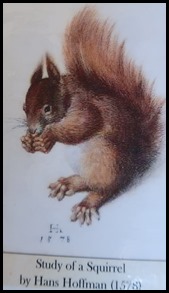 Squirrels
and Fur Trim. During the 16th century the humble squirrel played many parts,
from pet to decorative trimming. Their fur and pelts, which were known as great
miniver (or Vair if sewn together), were used to decorate sleeves, line cloaks
and to add ornamentation and finery to the edges of expensive garments, hats and
even gloves. Although the term ‘grey squirrel’ was
used by the Tudors, they were not referring to the grey squirrels that we know
today. The modern American grey squirrel, now common in the UK, was only
introduced to English soils in the 1870s. The grey squirrel of the 16th century
was actually the winter coat of the native red squirrel. The pure white miniver fur (from the
belly) could also be sourced from ermine and, along with great miniver, came
under the strict sumptuary laws. These rules attempted to restrict the
sumptuousness of dress in order to curb extravagance, protect fortunes, and make
clear the necessary and appropriate distinctions between levels of society.
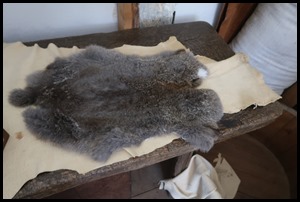 Here in the workshop was a grey squirrel pelt to handle, this gave us an idea of how
the red squirrel fur would have felt like. Very soft and luxurious. Agreed.  Gentlemen’s
Gloves. 1600s. Kid skin, coloured thread silk. Museum Collection,
Shakespeare’s Birthplace Trust. 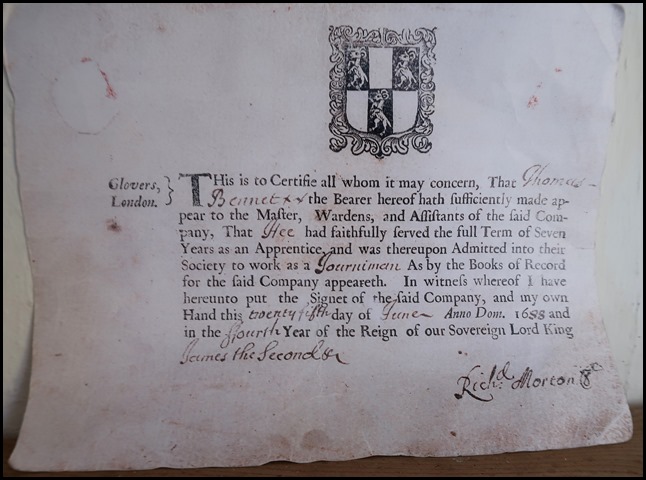 An interesting seven-year apprenticeship completion certificate from
1688. 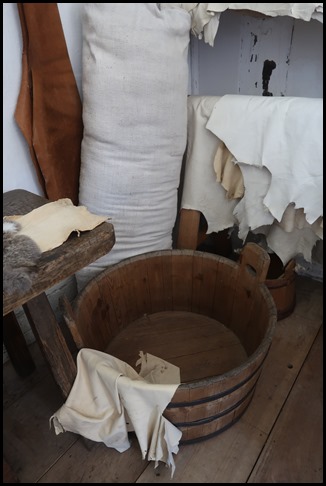  We left this busy
little workshop by the steep stairs in the far
left corner.  The Boys
Room. ‘Fairy king, attend and mark: I do hear the morning lark.’
A Midsummer Night’s Dream 4.1.92-93. From the age of five, Shakespeare
shared this bedchamber with his younger brothers Gilbert and Richard, whilst his
sisters slept in the room above the workshop (now where the Signed
Birthroom Window and bits stand). The Tudor world was saturated with
stories and superstitions which must have captivated the young children. Demons
and fairies were believed most likely to appear at night, whilst bad dreams were
caused by a spirit called the ‘night mare’. The children would have seen their
bed as a safe refuge against these spirits. Such superstitions clearly influenced
Shakespeare, with supernatural figures featuring prominently in plays such as
A Midsummer Night’s Dream and The Tempest. Familiar stories
such as Metamorphoses by Ovid and Chaucer’s Canterbury Tales
would also have a significant impact on Shakespeare’s
works. 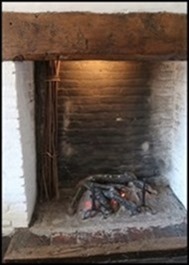  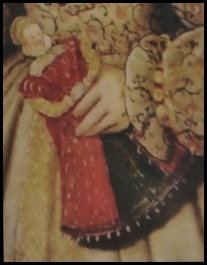 The fireplace
was to the right of the boys bed, to the left, the doorway into their parents
room. Bartholomew Baby (Wooden Doll): Style of
wooden doll that could have arms added, and clothing
made for them in a fashionable style. First sold at St Bartholomew’s Fair, hence
its name. The fair was held in August every year from 1133 to 1855 in London.
Wooden babies, as they were known, were not called ‘dolls’ until the 1700’s.
‘Dolls’ of the 1500’s could be made from wood, cloth or metals such as
pewter. 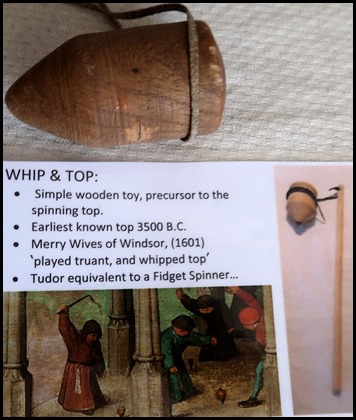 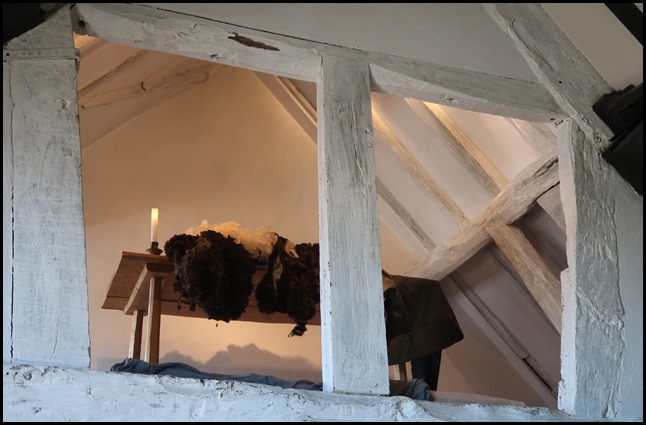 Above the boys bed was an attic workroom. 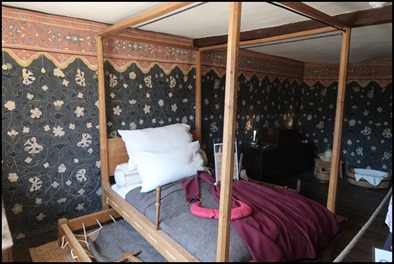 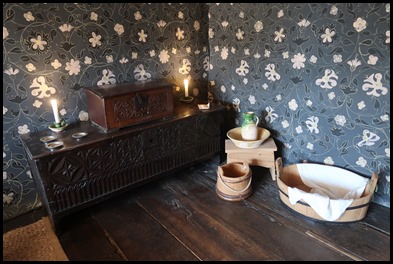 Shakespeare’s parents bedroom. (Canopy currently undressed
the information board reads) Conservation Uncovered. ‘Their ragged curtains
poorly are let loose’. Henry V: Act 4, Scene 2. Do excuse the undraped
bed, but we are currently replacing the replica textiles in this room. This work
gives you the opportunity to see the construction and hidden areas of the
framework not usually seen by visitors. The previous drapes, curtains and
bedcovers have suffered from light damage, which has caused the textile fibres
to break down and the material to deteriorate. Natural fibres are also very
tempting to clothes moths, causing even further damage.
The new hangings will look and feel
like linen or wool, but are being made from a synthetic fabric, making it
resistant to light and pest damage. This will extend the life of them far beyond
natural ones. 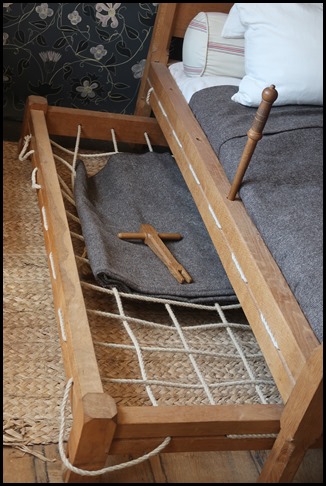 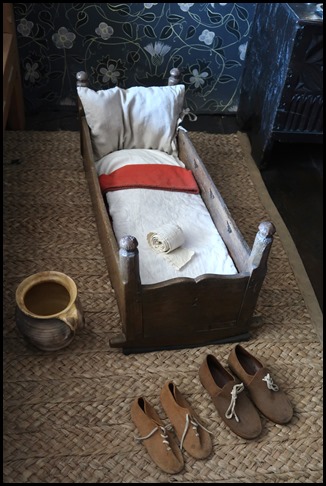 To the left of the bed we saw the pull-out truckle bed, the supportive ropes loose with the
tightening tool – where we get the saying ‘Sleep Tight’, to the right
of the bed was the cot and always handy, the chamber
pot. To the right was a large fireplace and beyond, the steep stairs
down.  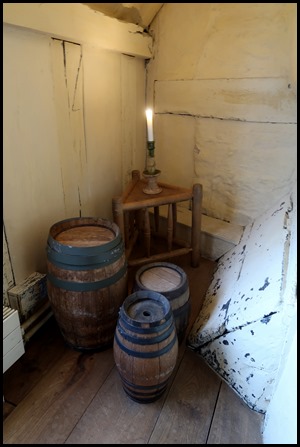 Staircase and
storage area. 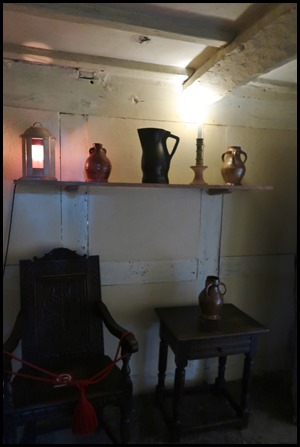 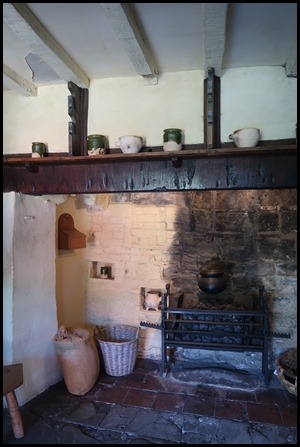 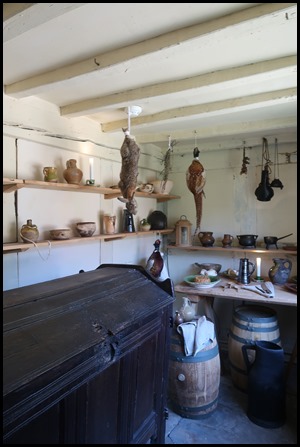 A sitting area
that held lots of the house history (own blog). Fairly large
room with fireplace (unsure) and the Drinking
Parlour. 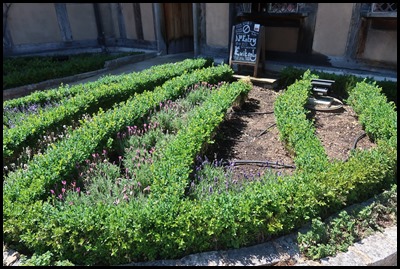 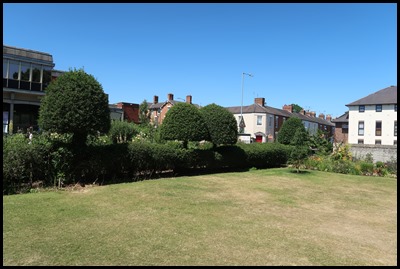 The herb garden,
the large lawned area and after some more of the fun
entertainment we exited through the shop. ALL IN ALL INCREDIBLE TO SEE A
LITTLE OF WHAT WAS THE BARD’S BACKSTORY
VERY QUAINT AND REMARKABLY
PRESERVED |